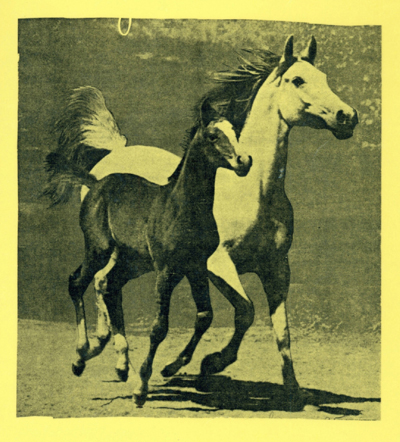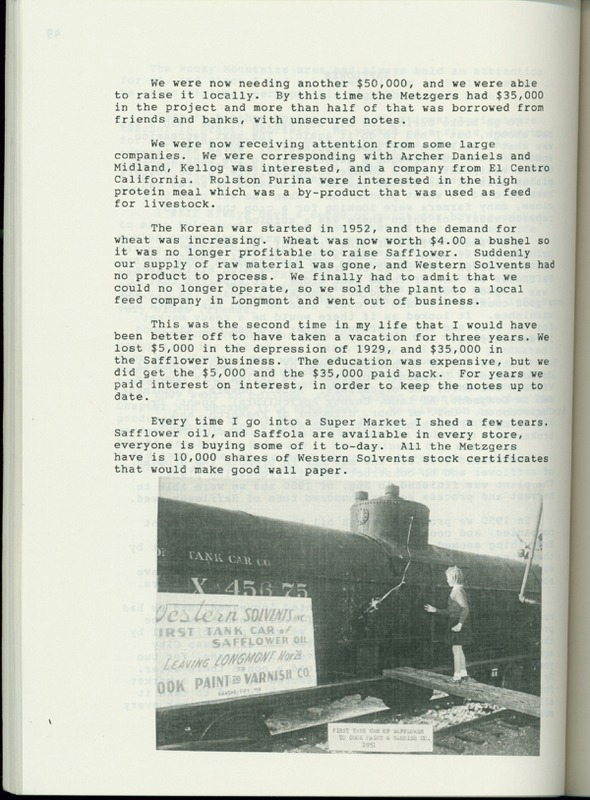102
Item
-
Title
-
102
-
Transcription
-
We were now needing another $50,000, and we were able to raise it locally. By this time the Metzgers had $35,000 in the project and more than half of that was borrowed from friends and banks, with unsecured notes.
We were now receiving attention from some large companies. We were corresponding with Archer Daniels and Midland, Kellog was interested, and a company from El Centro California. Rolston Purina were interested in the high protein meal which was a by-product that was used as feed for livestock.
The Korean war started in 1952, and the demand for wheat was increasing. Wheat was now worth $4.00 a bushel so it was no longer profitable to raise Safflower. Suddenly our supply of raw material was gone, and Western Solvents had no product to process. We finally had to admit that we could no longer operate, so we sold the plant to a local feed company in Longmont and went out of business.
This was the second time in my life that I would have been better off to have taken a vacation for three years. We lost $5,000 in the depression of 1929, and $35,000 in the Safflower business. The education was expensive, but we did get the $5,000 and the $35,000 paid back. For years we paid interest on interest, in order to keep the notes up to date.
Every time I go into a Super Market I shed a few tears. Safflower oil, and Saffola are available in every store, everyone is buying some of it to-day. All the Metzgers have is 10,000 shares of Western Solvents stock certificates that would make good wall paper.
-
Rights
-
To inquire about usage, please contact Archives & Special Collections, University of Nebraska-Lincoln Libraries. These images are for educational use only. Not all images are available for publication.
 Metzger Memories
Metzger Memories


